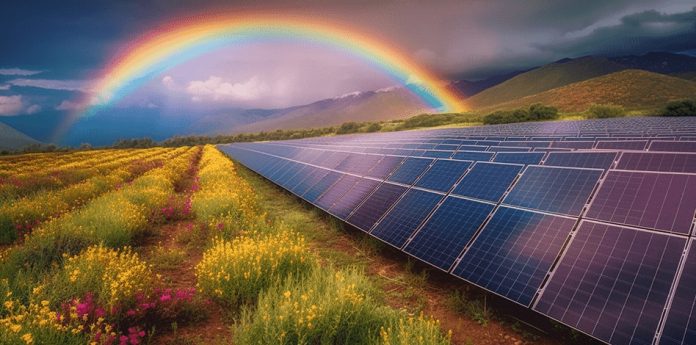Global renewable energy capacity grew at the fastest pace in 2023 in 20 years, which could bring the world closer to meeting a key climate target by the end of the decade, The Guardian reports.
Last year, global renewable energy grew by 50 per cent to 510 gigawatts (GW). As a result, 2023 was the 22nd consecutive year in which renewable energy capacity additions set a new record.
The “impressive” growth gives world governments a “real chance” to honour the commitment made at the Cop28 climate talks in November to triple renewable energy capacity by 2030 to significantly reduce fossil fuel consumption, the The International Energy Agency (IEA) reports.
The latest IEA report shows that solar power accounted for three-quarters of all new renewable energy capacity installed globally last year. Most of the world’s new solar power plants were built in China, which installed more solar power plants last year than the rest of the world the year before, despite subsidy cuts in 2020 and 2021.
Record growth in Brazil, Europe and the US has led to renewables overtaking coal as the largest source of global electricity generation by early 2025, the IEA said.
Renewables are projected to account for more than 42% of global electricity generation by 2028. Trialling global renewable energy by the end of the decade to reduce carbon emissions is one of five key climate targets to prevent abrupt climate warming, along with doubling energy efficiency, reducing methane emissions, transitioning away from fossil fuels and increasing financing for emerging and developing economies. Fatih Birol, the IEA’s executive director, said:
It’s excellent news to see the historical and spectacular growth of renewable energy.
He emphasised that while the report showed that global renewable energy capacity was planned to increase by two and a half times by 2030, it was not yet expected to meet Cop28’s target of tripling renewable energy capacity. Birol said:
We’re not there, but we’re not a million miles away. And governments have the tools needed to close the gap.
Birol assured that the rapidly rising costs faced by wind energy developers in the US and Europe would not hinder the long-term growth of the industry. The combination of higher interest rates and supply chain costs has forced some developers to cancel large offshore wind farm projects and raised concerns about the future of the technology. He said:
I would be very careful not to confuse a cyclical increase in costs with a structural increase in costs. Costs will continue to come down in the industry, as the cyclical costs of today begin to ease.
Emerging and developing economies may face challenges in accessing finance, strengthening governance and establishing robust regulatory frameworks, which will be necessary to mitigate investor risk and attract investment, which may include setting new targets and policies in countries where they do not yet exist, the IEA said. Birol added:
For me, the most important challenge for the international community is rapidly scaling up financing and deployment of renewables in most emerging and developing economies, many of which are being left behind in the new energy economy. Success in meeting the tripling goal will hinge on this.
